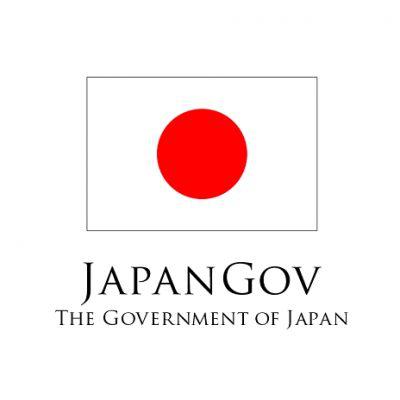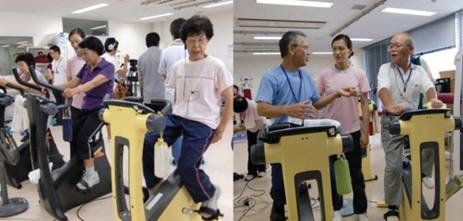Japan UsingDigital Technology To Enhance Longevity In Society

Japan ResearcherBrand Contributor
Japan
BRANDVOICE| PaidProgram
Innovation
“It's already beenscientifically proven that we could live up to 120 years old and our researchshows that our muscles can grow beyond the age of 90 if we exercise properly,”says Kuno Shinya, a professor at Tsukuba University who has spent decadesworking to improve the health of Japan’s elderly. Kuno says this information iscommon knowledge among researchers but it hadn’t been applied or utilized forhealthcare promotion. So, he set up a company – Tsukuba Wellness Research – toapply the results of his research to local communities.

Tsukuba UniversityProfessor Kuno Shinya’s research has shown how exercise can improve people’shealth no matter how old they are.
JAPANBRANDVOICE
Japan already hasthe oldest population in the world. A 2019 Cabinet Office report showed that 28.1 percent of Japan’s people in 2018 were aged over65 and by 2065 that figure will be over 38 percent, but it’s not just aJapanese problem.According to a United Nations report, the aging ofthe world’s population is accelerating: “In 2019, there were 703 millionpersons aged 65 years or over in the global population. This number isprojected to double to 1.5 billion in 2050.” These figures show how societiesare aging around the world, but Kuno’s concern extends beyond these figures.
Tsukuba UniversityProfessor Kuno Shinya’s passion and devotion have revitalized citizens,making them healthier and giving thema greater sense of community andwell-being.
JAPAN BRANDVOICE
Making theUnhealthy Healthier
Kuno instituted aprogram in local areas of Japan that used individual monitoring devices togather information – such as blood pressure, weight, fat ratio, steps taken– from elderly citizens to record their healthstatistics and create a database. Anincentive system was also introduced, handing out rewards such as giftcertificates to those doing more exercise. A program in Mitsuke Cityhelped to increase the number of steps taken daily from around 6,000 to over 8,000for those involved. The results showed that thehealth benefits could reduce medical expensesby $500 per person peryear on average and up to $2,000 for those in their 70s.
Kuno’s othermission is to help the elderly who have no active interest in being healthychange their lifestyles to become healthier. One means of achieving this isthe Social Impact Bond (SIB), a public-privatecollaborative systemin which thepublic sector commissions results-based projects to the private sector in orderto solve social challenges. “The government is starting to offerincentives to both individuals and local governments, which is a great stepforward,” Kuno says. “We believe that the SIB system, which is focused onresults, is a very useful methodology and we currently have more than 10 SIBprojects under way with support from government subsidies.” Kuno emphasizes howthe right programs can be used to improve the health of the elderly and howpolicies derived from data can reduce medical costs. One of these programswas SIBs, the other was the Smart Wellness City.
Kuno was attractedto the concept of the Smart Wellness City, “a city that is designed to makepeople healthy even if they have no active interest in being healthy.” Theexamples above are conscious ways of getting people to improve their health,but unconscious ways are equally effective.Tokyo, for example, has alow number of diabetic patients compared to other cities, and Kuno puts thisdown to the fact that people walk more and use cars less. The structure ofthe city improves its citizens’ health. “We must explore social technologytogether with scientific technology,” he adds. In other words: What cantechnology do to improve people’s health even when they are not consciouslytrying to be healthier?
Making Policywith Answers from AI
To analyze theimpact of his programs on health, Kuno needed two things: data on how theelderly live their lives and a means to analyze this data. The results wouldhelp local (or national) governments create health policies. Kunocollaborated with the Life Value Creation Unit of NTT Data Institute ofManagement Consulting, a subsidiary of Japan’s largest telecommunications firmthat aims to create a sustainable society. Together, they have developed theSmart Wellness City-AI (SWC-AI) program to evaluate health-related data andsupport local government initiatives to re-energize regional development andstrengthen the ability of municipalities (local government) to formulate (plan)health policies based on data processed by AI.
SWC-AI canevaluate health-related data and support local government initiatives tore-energize regional development.
JAPANBRANDVOICE
“The SWC-AIinitiative is an evidence-based way of understanding things on a broad leveland using the data to formulate policy,” says Kitano Hiroyuki, a Senior Managerat the Life Value Creation Unit. SWC-AI was launched in 2020 and has alreadybeen utilized in about 10 municipalities. All the data is anonymous andprovided with the consent of citizens, as well as being strictly secured usingcyber security and other protection systems. The greater the amount of data,the better the results, Kitano says, adding that a comprehensive and unifiedsystem of health records is needed to get the full benefit of the data. It isanticipated that 100 municipalities will be using SWC-AI in the near future.
Kitano says, “Atthe individual level, patients could get uniform healthcare wherever they goand AI could create programs for individuals.” But the initial aim of the programis broader in scale: to use the data from, currently, 750,000 people’sinformation to optimize medical costs and to enable local governments to createevidence-based policies. Kitano and Kuno are seeking to expand their horizonsfurther by collaborating with more businesses both at home and abroad.
Kitano Hiroyuki,co-creator of SWC-AI, says its greatest achievement so far is creating astructure to collect data from various institutions in Japan.
JAPAN BRANDVOICE
Kuno’s visionis not only to use data to show people how they can be healthier and to assistin local government policy-making, but also to make sure no one gets leftbehind in the digital age. “I want to make everyone in Japan healthy,” hepoints out. “The challenge is to utilize data in a way that people can see andunderstand it. If you can do that, more people will be able to live happilyinto their old age.” With its aging population as a source of scientificknowledge and data, Japan continues to lead the way to a time when living longer,healthier lives will be the norm rather than the exception.
Note: AllJapanese names in this advertorial are given in the traditional format, withthe family name preceding the given name.
To learn moreabout Tsukuba Wellness Research (TWR), please click here.
To learn moreabout NTT Data Institute of Management Consulting, please click here.